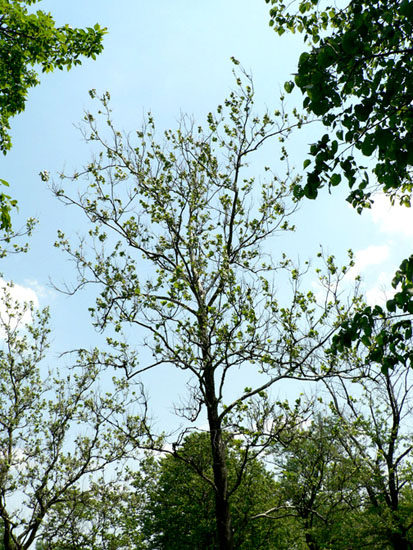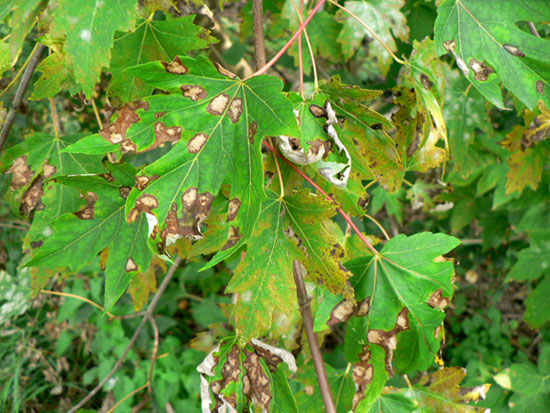Issue 6, May 28, 2010
Anthracnose Update
This spring, many plants have become infected with anthracnose (refer to issues 3 and 4 of this newsletter). There are several similar fungi that cause anthracnose diseases. Most of these fungi infect foliage and overwinter on the dead leaves. However, the anthracnose fungi on oak, sycamore and dogwood trees will overwinter in bud and bark tissue. This explains why we see those hosts infected each year in Illinois.


Anthracnose fungi need wet conditions to infect and spread. Foliar symptoms include small round to irregular tan to dark brown or black spots. Symptoms vary with the host plant. The images show anthracnose on sycamore and silver maple. Spots can enlarge/merge to form blotches. Veinal necrosis (along veins) may occur on sycamores, oaks, and maples. Young leaves may die and fall soon after infection. Severe defoliation usually triggers new leaf growth. Management includes growing resistant plants when possible, sanitation and the use of fungicides (preventives only).--Jim Schuster
Author:
Jim Schuster